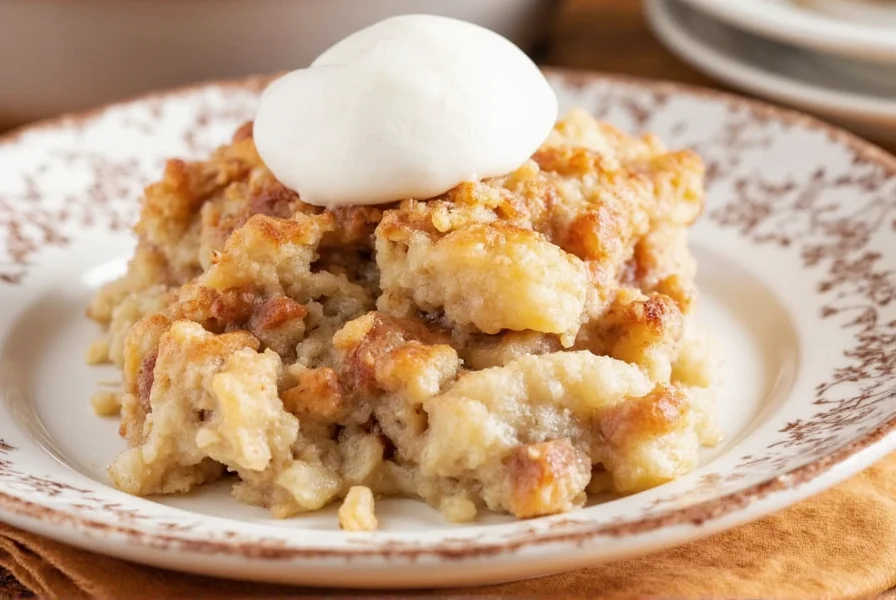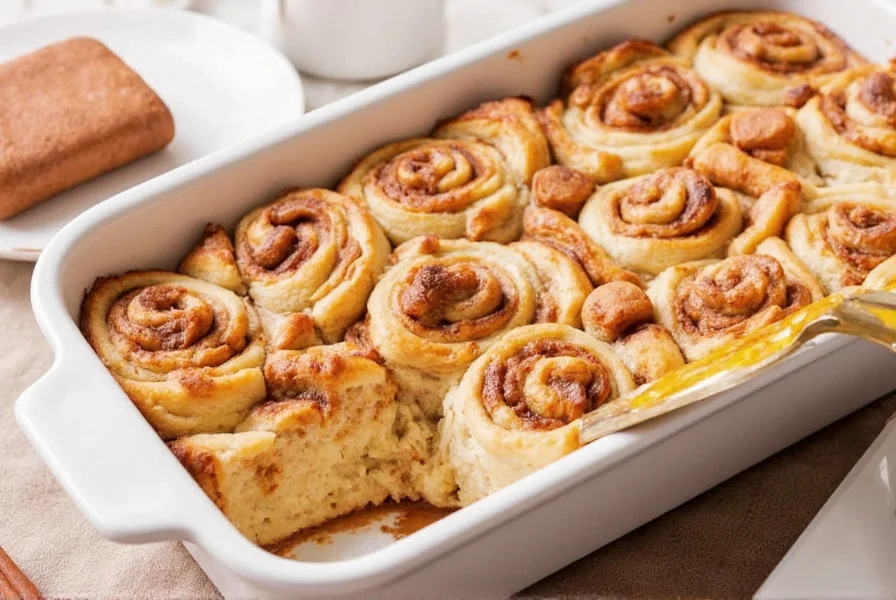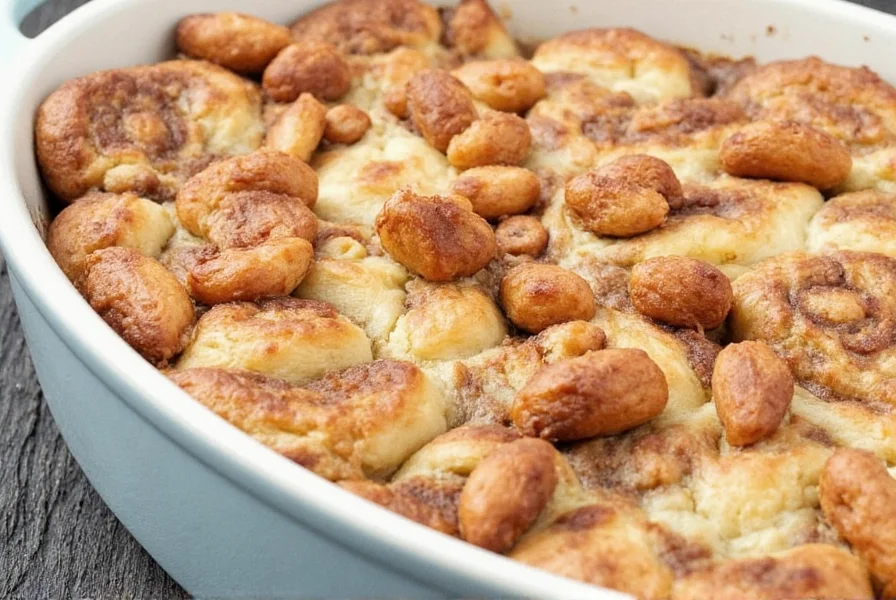A cinnamon bun casserole transforms the beloved flavors of traditional cinnamon rolls into an easy-to-serve, crowd-pleasing breakfast casserole. This popular brunch dish combines the sweet, buttery goodness of cinnamon rolls with the convenience of a baked casserole format, making it perfect for holiday mornings, special occasions, or weekend breakfasts when you want to impress with minimal effort.
The Essential Cinnamon Bun Casserole Recipe
Creating the perfect cinnamon bun casserole starts with quality ingredients and proper technique. While many home cooks opt for canned cinnamon roll dough for convenience, making the dough from scratch yields superior flavor and texture. The magic happens when the cinnamon-sugar filling melts during baking, creating that signature gooey center surrounded by tender, buttery pastry.
| Prep Time | Cook Time | Total Time | Servings |
|---|---|---|---|
| 15 minutes | 35-40 minutes | 50-55 minutes | 8-10 servings |
Ingredients for Classic Cinnamon Bun Casserole
For the casserole base:
- 8-10 quality cinnamon rolls (either homemade or premium store-bought)
- ½ cup unsalted butter, melted
- ½ cup packed light brown sugar
- 2 tablespoons maple syrup or honey
- 1½ teaspoons ground cinnamon
For the creamy topping:
- 3 large eggs
- 1 cup whole milk or half-and-half
- ¼ cup granulated sugar
- 1 teaspoon vanilla extract
- Pinch of salt
Step-by-Step Preparation Guide
Follow these professional techniques for cinnamon bun casserole perfection:
- Prepare the cinnamon sauce: In a small bowl, combine melted butter, brown sugar, maple syrup, and cinnamon. Mix until smooth and well incorporated.
- Arrange the base: Pour the cinnamon sauce evenly into the bottom of a greased 9x13-inch baking dish. This creates the signature gooey bottom layer.
- Position the rolls: Cut each cinnamon roll into thirds and arrange the pieces cut-side down in a single layer over the sauce. For richer flavor, slightly overlap the pieces.
- Create the custard: Whisk together eggs, milk, sugar, vanilla, and salt until smooth. Pour evenly over the arranged roll pieces.
- Rest the casserole: Cover and refrigerate for at least 30 minutes (or up to overnight) to allow the dough to absorb the custard mixture.
- Bake to perfection: Preheat oven to 350°F (175°C). Bake uncovered for 35-40 minutes, until the center is set and the top is golden brown. A knife inserted in the center should come out clean.
- Cool and serve: Allow to rest for 5-10 minutes before serving. The casserole will continue to set as it cools.

Pro Tips for Cinnamon Bun Casserole Success
Professional bakers emphasize these critical techniques for the best results:
- Dough temperature matters: If using refrigerated dough, let it sit at room temperature for 10-15 minutes before cutting. Cold dough is harder to work with and may not absorb the custard properly.
- Avoid overbaking: The casserole continues cooking from residual heat after removal from the oven. Remove when the center is just set to prevent dryness.
- Enhance the cinnamon flavor: Add a pinch of cardamom or nutmeg to the cinnamon sugar mixture for deeper flavor complexity.
- Prevent sticking: Use a light coating of non-stick spray on your baking dish, even if you've greased it with butter.
Popular Cinnamon Roll Casserole Variations
Adapt this versatile recipe to suit different dietary needs and preferences:
- Overnight cinnamon bun casserole: Assemble the casserole the night before, cover tightly, and refrigerate. Bake straight from the refrigerator the next morning, adding 5-10 minutes to the baking time.
- Gluten-free cinnamon roll casserole: Use high-quality gluten-free cinnamon rolls and ensure your baking dish is well-greased to prevent sticking.
- Cream cheese stuffed version: Before cutting the rolls, gently unroll each one, spread with cream cheese filling, then re-roll before cutting into pieces.
- Apple cinnamon bun casserole: Add 1½ cups of thinly sliced apples (like Honeycrisp or Granny Smith) between the roll layers for a delightful fruit twist.
Serving Suggestions and Pairings
Elevate your cinnamon bun casserole experience with these professional recommendations:
- Drizzle with additional warm caramel sauce or maple syrup just before serving
- Serve with a dollop of freshly whipped cream or vanilla ice cream for dessert-style presentation
- Pair with a strong coffee or chai tea to balance the sweetness
- Complement with fresh berries (strawberries, raspberries) to add brightness and cut through the richness
- For brunch buffets, serve alongside savory options like bacon or sausage to create balance
Storage and Reheating Guidelines
Proper storage maintains quality and extends enjoyment:
- Room temperature: Store covered at room temperature for up to 2 days
- Refrigeration: Keep in an airtight container in the refrigerator for 4-5 days
- Freezing: Wrap individual portions tightly in plastic wrap and aluminum foil; freeze for up to 2 months
- Reheating: Microwave single servings for 30-45 seconds, or reheat larger portions covered with foil in a 325°F oven for 15-20 minutes until warmed through

Common Questions About Cinnamon Bun Casserole
Can I make cinnamon bun casserole without canned rolls?
Yes, you can absolutely make cinnamon bun casserole from scratch. Prepare your favorite yeast roll dough, roll it out, spread with butter, cinnamon and sugar, roll up, slice, and arrange in your baking dish following the same layering technique. The homemade version typically yields superior flavor and texture compared to using canned rolls.
Why is my cinnamon roll casserole soggy in the middle?
A soggy center usually occurs when the casserole hasn't baked long enough or when too much liquid is added to the custard mixture. Ensure your oven is properly preheated, bake until a knife inserted in the center comes out clean, and measure ingredients precisely. Allowing the assembled casserole to rest for at least 30 minutes before baking helps the dough absorb the custard properly.
How do I prevent my cinnamon bun casserole from sticking to the pan?
To prevent sticking, generously grease your baking dish with butter or non-stick spray before adding the cinnamon sauce. Some bakers recommend lining the dish with parchment paper for extra insurance. After baking, let the casserole rest for 5-10 minutes before attempting to serve, as this allows the structure to set and makes removal easier.
Can I prepare cinnamon bun casserole ahead of time?
Yes, cinnamon bun casserole is ideal for make-ahead preparation. Assemble the casserole, cover tightly, and refrigerate for up to 24 hours before baking. When ready to bake, remove from the refrigerator while the oven preheats (about 20 minutes), then bake as directed, adding 5-10 minutes to the baking time if needed. This overnight cinnamon bun casserole method actually improves flavor development.
What's the ideal baking temperature for cinnamon roll casserole?
The ideal baking temperature for cinnamon roll casserole is 350°F (175°C). This moderate temperature allows the custard to set properly without browning too quickly. Baking at too high a temperature can cause the edges to overcook while the center remains underdone, while too low a temperature may result in a dense, gummy texture.











 浙公网安备
33010002000092号
浙公网安备
33010002000092号 浙B2-20120091-4
浙B2-20120091-4